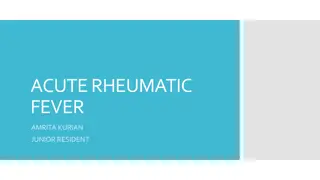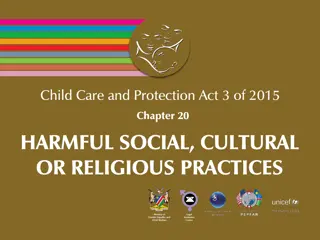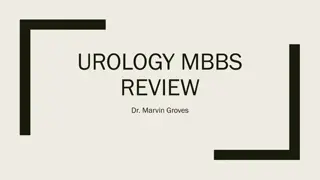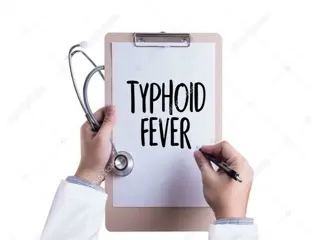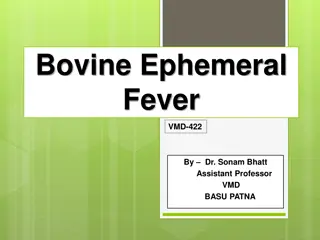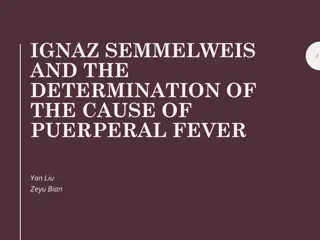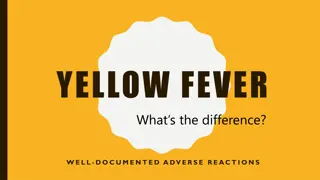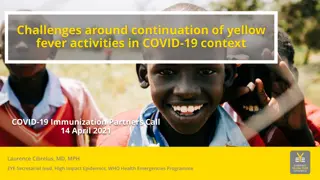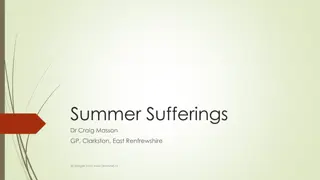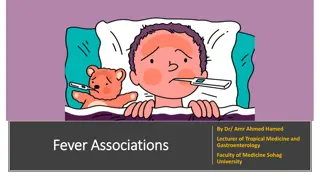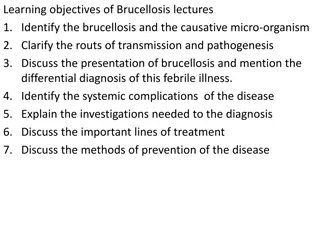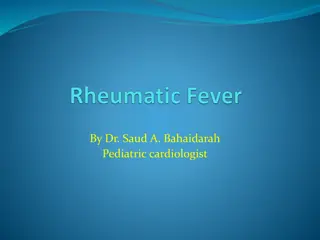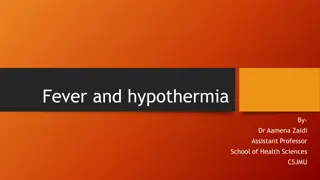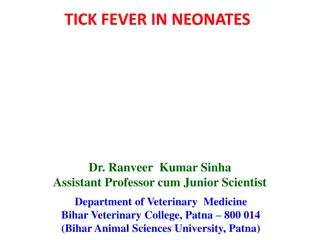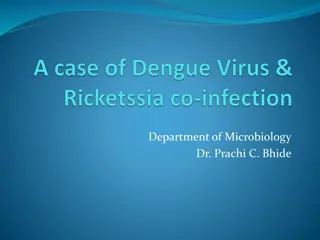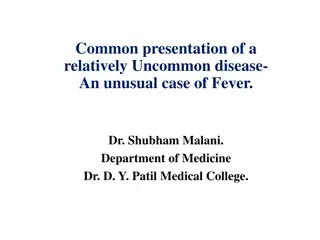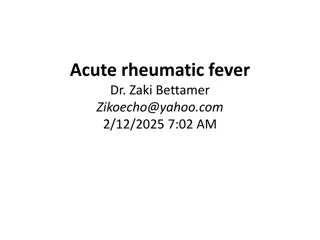Approach to Fever in Children: Understanding Best Practices
Learn essential concepts in managing febrile children, including definitions, guidelines, and case presentations. Explore the impact of fever on pediatric emergency medicine practice and strategies for assessing and treating children with varying risk factors.
Download Presentation

Please find below an Image/Link to download the presentation.
The content on the website is provided AS IS for your information and personal use only. It may not be sold, licensed, or shared on other websites without obtaining consent from the author.If you encounter any issues during the download, it is possible that the publisher has removed the file from their server.
You are allowed to download the files provided on this website for personal or commercial use, subject to the condition that they are used lawfully. All files are the property of their respective owners.
The content on the website is provided AS IS for your information and personal use only. It may not be sold, licensed, or shared on other websites without obtaining consent from the author.
E N D
Presentation Transcript
Approach to Fever in Children Hashim Bin Salleeh Associate Professor of Emergency Medicine Consultant Pediatrician & Pediatric Emergency Medicine KSU
Educational Objectives By the end of this session, audience should be able to: Know the definition of Fever, FWS, & SBI Know the impact of this topic on PEM practice Stratified febrile children according to their risk factors Know the guidelines for management of children with FWS
Case # 1 4 days old baby boy brought by his parents with H/O fever since last night clinically looks well temp 38.5 C rectal How would you approach this child ?
Case # 2 3 weeks old baby girl brought by her grandmother complaining of fever for 2 days. Clinically looked well temp 37.5 C rectal How would you approach this child ?
Case # 3 6 month old boy brought to ED with H/O fever for 3 days associated with skin rash clinically looked sick lethargic temp 40 C rectal How would you approach this child ?
Case # 4 2 months old baby girl presented with fever for 3 days. Clinically looked well temp 38.9 C rectal How would you approach this child ?
Definitions Temperature > 38 C (100.4 F) rectal Fever due to an infectious origin in children are rarely above 42 C Serious bacterial infection Bacteremia Meningitis Osteomyelitis Septic arthritis UTI Bacterial enteritis Periorbital cellulitis Abscess Cellulitis
What is the normal temperature? Rectal 36.6 to 38 C Ear 35.8 to 38 C Oral 35.5 to 37.5 C Axillary 34.7 to 37.3 C Canadian pediatric society statement, Pediatric Child Health 2000
Measurement sites Child's age Rectal Oral Axillary x Newborn to 3 months x x 3 months to 3 years x x x 4 to 5 years x x 5 years and older
Definitions contd Fever without a source (FWS) No apparent etiology from history and physical examination
Pathophysiology Raising of hypothalamic set point in CNS Infection collagen vascular disease malignancies lowered by antipyretic medication and removing heat Heat production exceeding heat loss salicylate overdose Hyperthyroidism environmental heat Defective heat loss ectodermal dysplasia heat stroke poisoning with certain drugs
Epidemiology 65% of children 0-2 years visit a physician for a febrile illness 10 to 20% of all pediatric visits to EDs 20 to 30% of pediatric office visits Fever without a source accounts for as many as 50% of these visits A self limited illness in the vast majority A small percentage will have a SBI
Approach to febrile child . Age dependant Documentation of fever Detailed History Duration of fever Associated symptoms Look for the focus History Physical exam Investigations Management options Age General condition Focus of the fever
Approach to sick young febrile child Acute care area ABC Quick IV access is important Consider all of the following Infection Metabolic Cardiac Abuse Abx should be given even before definitive C/S
Relevant Age Groups and development Age stratification of risk for SBI 0 4w 0 ..8w 0 . .12w 0 . ..3y > 3 years old Why?
0- 1 month Clinical judgment and febrile infant protocols do not work in neonates
Bacteriology /Virology GBS E.coli Enterococcus Staph.aureus Listeria monocytogenes HSV Enterovirus RSV
Management CBC with diff UA and cath culture Blood C/S CSF Chest X ray if symptomatic Rx IV Abx & Admission
Treatment options Ampicillin 200 mg/kg/ day q 6h Gentamycicn 7.5 mg/kg/day q 8h (if CSF negative) OR Ampicillin 200 mg/kg/ day q 6h Cefotaxime 200 mg/kg/day q 6h
Low risk infants 29- 90 days Non-toxic, normal exam No focus of infection Negative past history WBC 5- 15,000/mm Band <1500/mm Normal UA
Components of Fever Protocols Avner J, Baker MD: EMCNA 2002; 20:49 Boston 28-89 > 38.0 Yes < 20,000 Yes Yes 5.4 94.6 Not stated 100 Philadelphia Rochester 29-56 > 38.0 Yes < 15,000 Yes No 0 100 Age (days) Temp (0C) Infant Obs. Score Peripheral WBC CSF obtained Antibiotic given SBI in low risk pts (%) NPV (%) Sensitivity (%) 0-60 > 38.0 No 5-15,000 No No 1.1 98.9 92.4
Risks in infants <12 weeks Problem Toxic Non-toxic Low risk 1.1% (0.2-2.6) Bacteremia 11% 2% 0.5 % (0.0-1.0) Meningitis 4 % 1 % 1.4 % (0.4-2.7) SBI 17% 8.6%
Consensus Panel Guidelines Low-Risk Infants 28-90 Days of Age Obtain urine culture and provide close follow-up - OR - Full sepsis evaluation (blood, urine, CSF) and treat with IM ceftriaxone All children who receive presumptive therapy should have an LP
Treatment options in low risk group Option one No Abx and return in 24 48 hour Option tow Ceftriaxone: 50 mg/kg and repeat examination at 24 h and 48 h
Overall rate of bacteremia if fever> 39 C is 4-7% Increases percent as temperature increases Most common organism of sepsis is S. pneumoniae Treatment of the focus e.g. OM, UTI
Antibiotics options Age Group ETIOLOGIC AGENTS IV ANTIBIOTICS E. coli. Group B streptococci Listeria Neonate< 2 months Ampicillin 50 mg/kg/dose q 4-6 hrs +Cefotaxime 50 mg/kg/dose q 12 hrs or Gentamicin 2.5 mg/kg/dose q 8 hrs N. Meningitidis S. Pneumoniae Group A Strep H. Influenzae (rare) 2 months 9 years Cefotaxime 50 mg/kg/dose q 6 hrs Ampicillin 50 mg/kg/dose q 4-6 hrs N. Meningitidis S. pneumoniae Penicillin G250,00 u/kg/24 hrs q 4 hrs or Cefotaxime50 mg/kg/dose q 6 hrs > 9 years Note: any third generation cephalosporin can substitute for cefotaxime
Common bugs of OB S.pneumoniae Salmonella non-thypho d N.meningitidis
Consensus Panel Guidelines Toxic-Appearing Infants and Children Hospitalize, evaluate and treat for presumed sepsis, meningitis, or SBI This holds for all age groups THIS SHOULD BE A NO BRAINER
Consensus Panel Guidelines Low-Risk Infants 3-36 Months of Age Urine culture for males < 6 mo & females < 2 yrs Stool culture if blood or mucus or > 5 WBC/hpf Chest x-ray if decreased breath sounds or SOB Blood culture if T > 39.0 0C and WBC > 15,000 Empiric therapy if T > 39.0 0C and WBC > 15,000 No diagnostic tests or antibiotics if T < 39.0 0C


